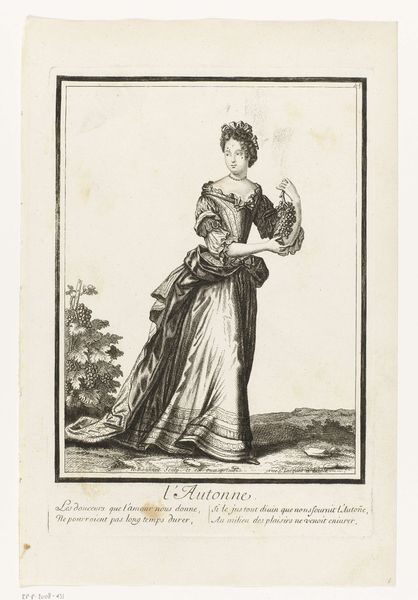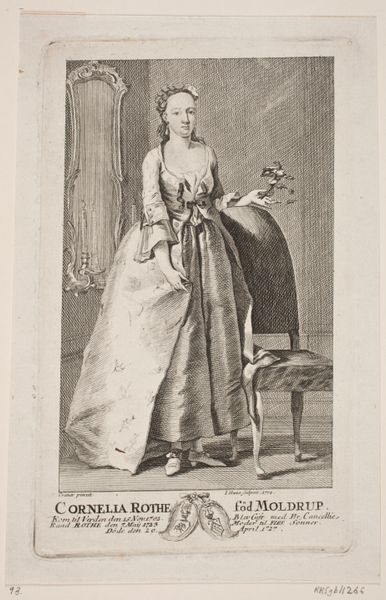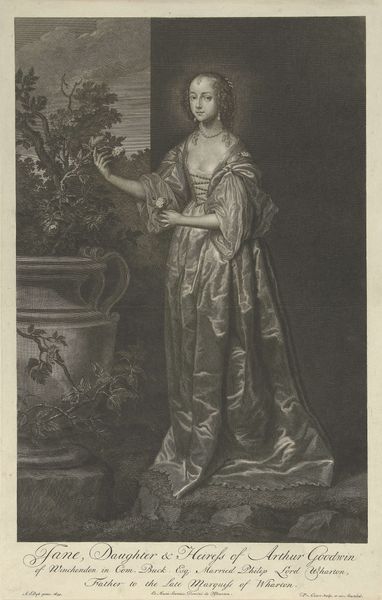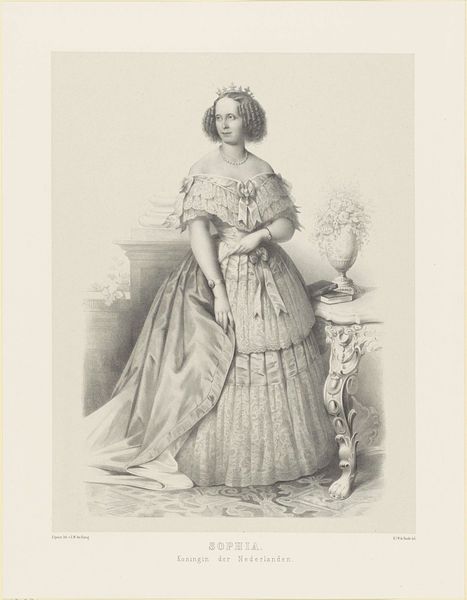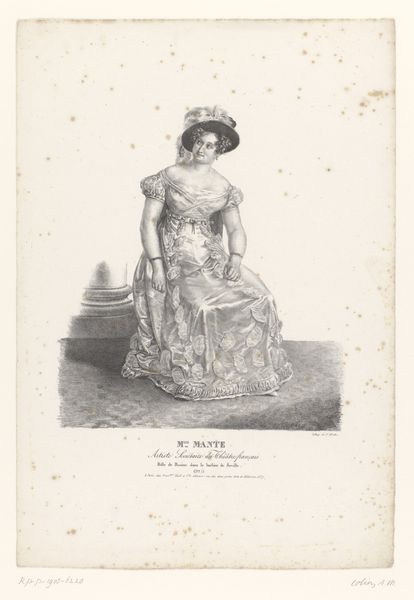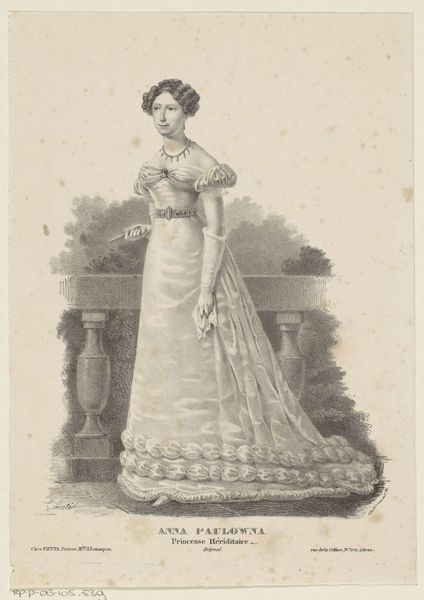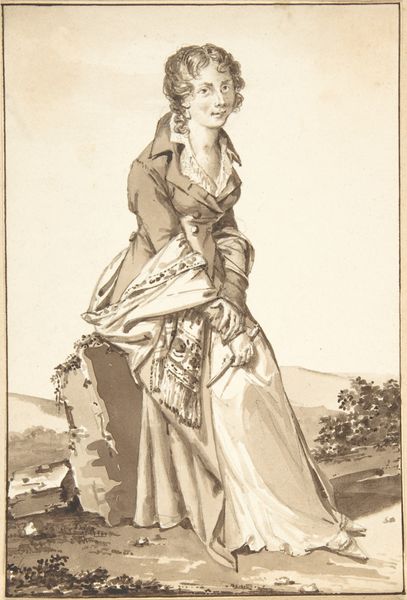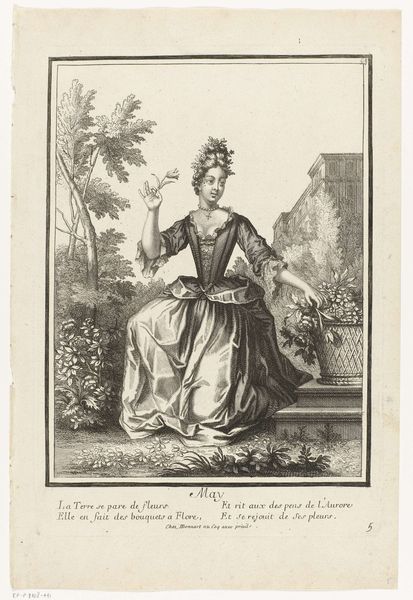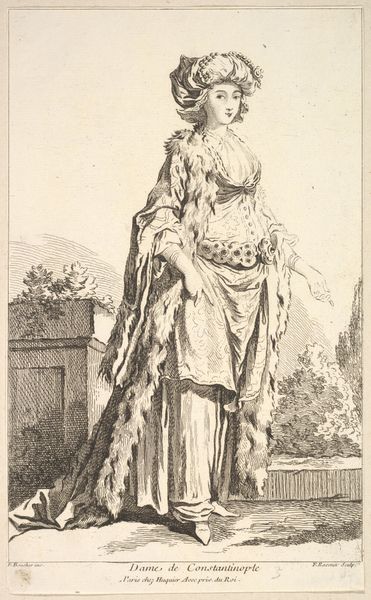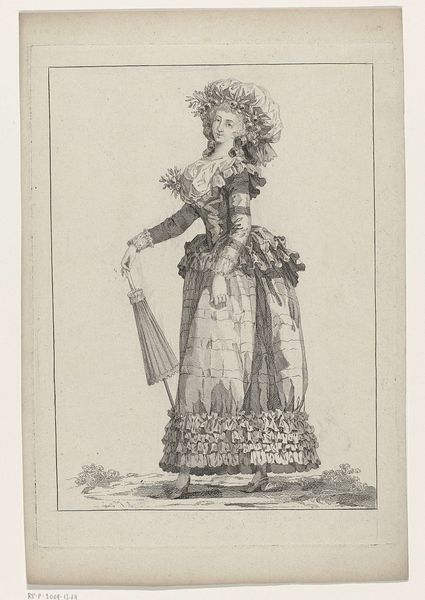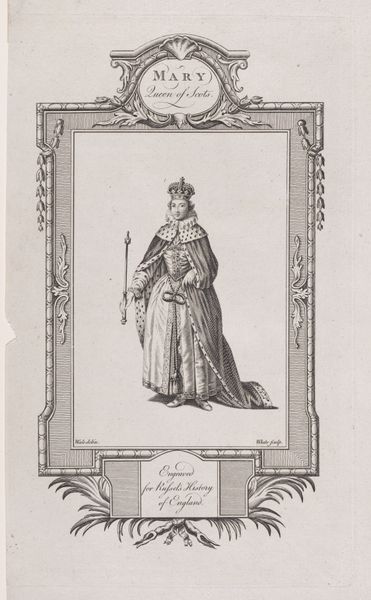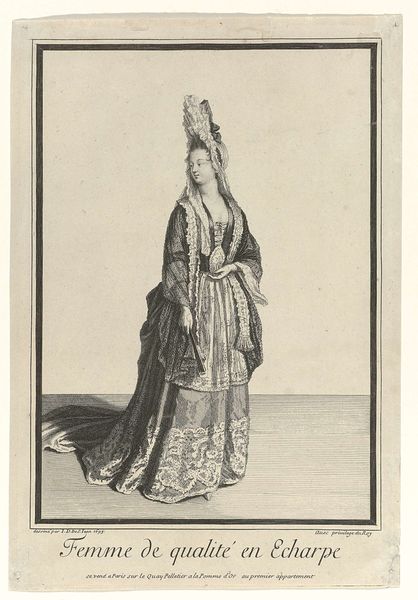
#
magazine cover layout
#
picture layout
#
image layout
#
photo restoration
#
expressing emotion
#
presentation photography
#
joyful generate happy emotion
#
archive photography
#
historical photography
#
photo layout
Dimensions: height 274 mm, width 192 mm
Copyright: Rijks Museum: Open Domain
Curator: Henri Bonnart, working sometime between 1652 and 1711, created this print titled "Herfst," or "Autumn" in Dutch. It resides here with us at the Rijksmuseum. What are your immediate thoughts? Editor: There’s something about the material presence, even in reproduction. Look at the dress—that engraving simulates the texture of fabric with such delicacy, yet also calls attention to the labor involved in both creating it and depicting it. And then, that hand grazing the vine...it suggests the haptic quality of harvesting. Curator: Precisely. It feels so fleeting, doesn't it? A single moment captured, the tail end of summer romance turning toward harvest. Her gentle touch speaks volumes. It makes me consider the vulnerability of transient beauty. Editor: I see the beauty, but my mind jumps to the economic reality of the image’s production, though. Bonnart was running a family business producing these fashion plates – images of the fashionable elite circulating in print form. These images not only documented what wealthy women wore but directly contributed to the desires that drove consumption of textiles, lace… Curator: A fascinating point! And what appears to be a celebration of a season of plenty is so intricately bound to consumerism and commerce. Did you notice how her gaze is somewhat aloof? Perhaps there's commentary on the superficiality of adornment or, perhaps she's lost in her thoughts about the day’s labour… Editor: Or a calculated display, an ad that seduces viewers into mimicking her look through purchasing power. The grapes in her hand and hanging over her shoulder almost seem like added, ornamental detail – no different than the lace trim on her skirts or the grapes woven into her hair. Curator: Ah, the fruits of labor recontextualized as adornment. Her hair piled so high must’ve been a daily performance. How many hands did it take to create such artifice, only for the wind to perhaps unravel it all by evening? Editor: Exactly! And this one image then requires many hands, from Bonnart and his workshop who engraved the plate to the print sellers distributing these across Europe. It becomes this elaborate circuit of production and consumption, all tied to visual pleasure. Curator: It feels heavier now, knowing the weight of that system behind her delicate fingers. The romance tarnished by labour! Yet it is compelling to witness that intersection. Editor: Yes, it adds another layer – a consciousness that links this seemingly innocuous image of “Autumn” to the systems that sustained the elites portrayed, while exploiting those who worked behind the scenes to produce both the art and the luxury goods. Curator: Something beautiful yet ever-so-slightly grotesque in this context. Thanks for shifting my perspective! Editor: And thank you for pointing out the beauty – I am always in danger of missing the art for the materiality!
Comments
No comments
Be the first to comment and join the conversation on the ultimate creative platform.
